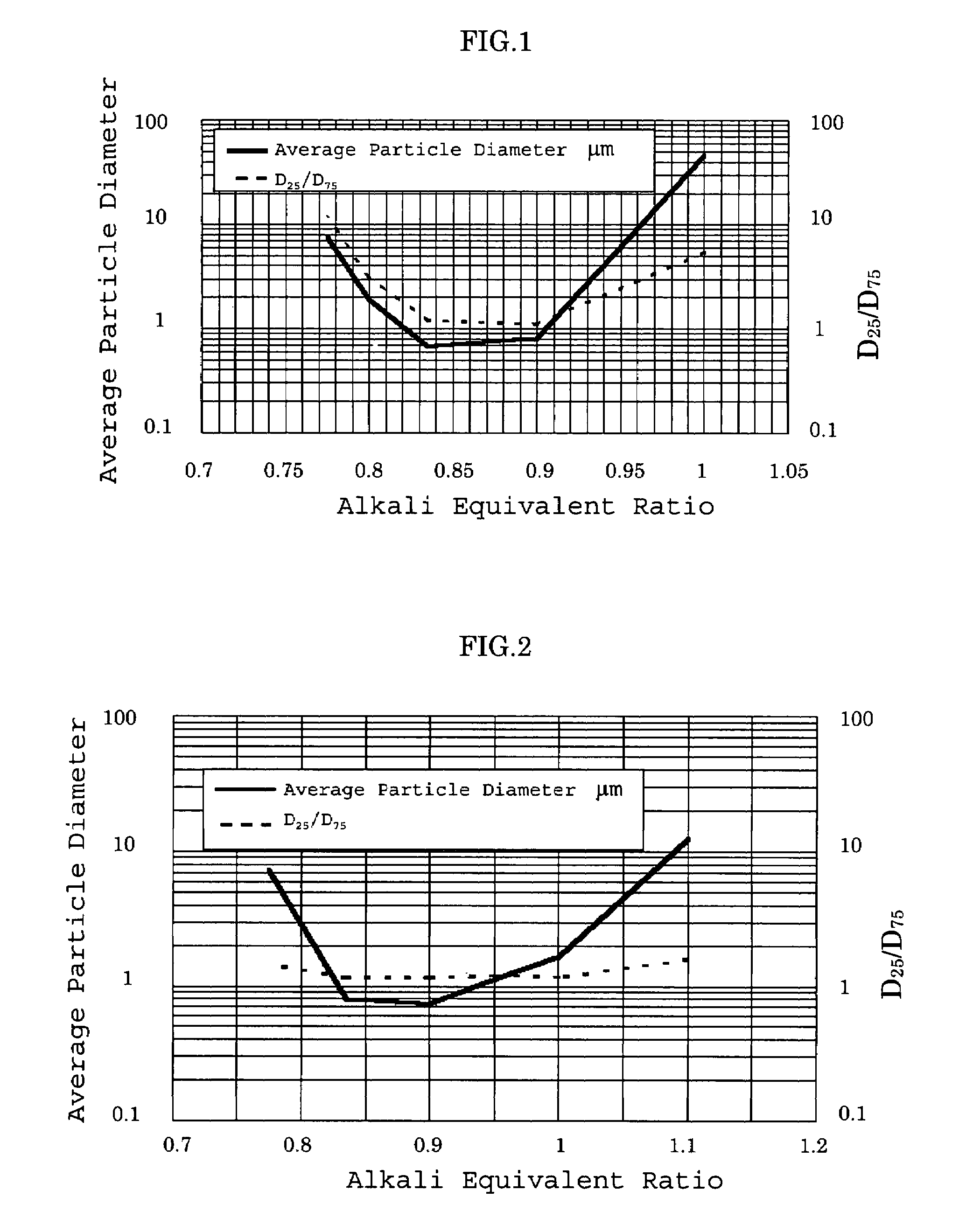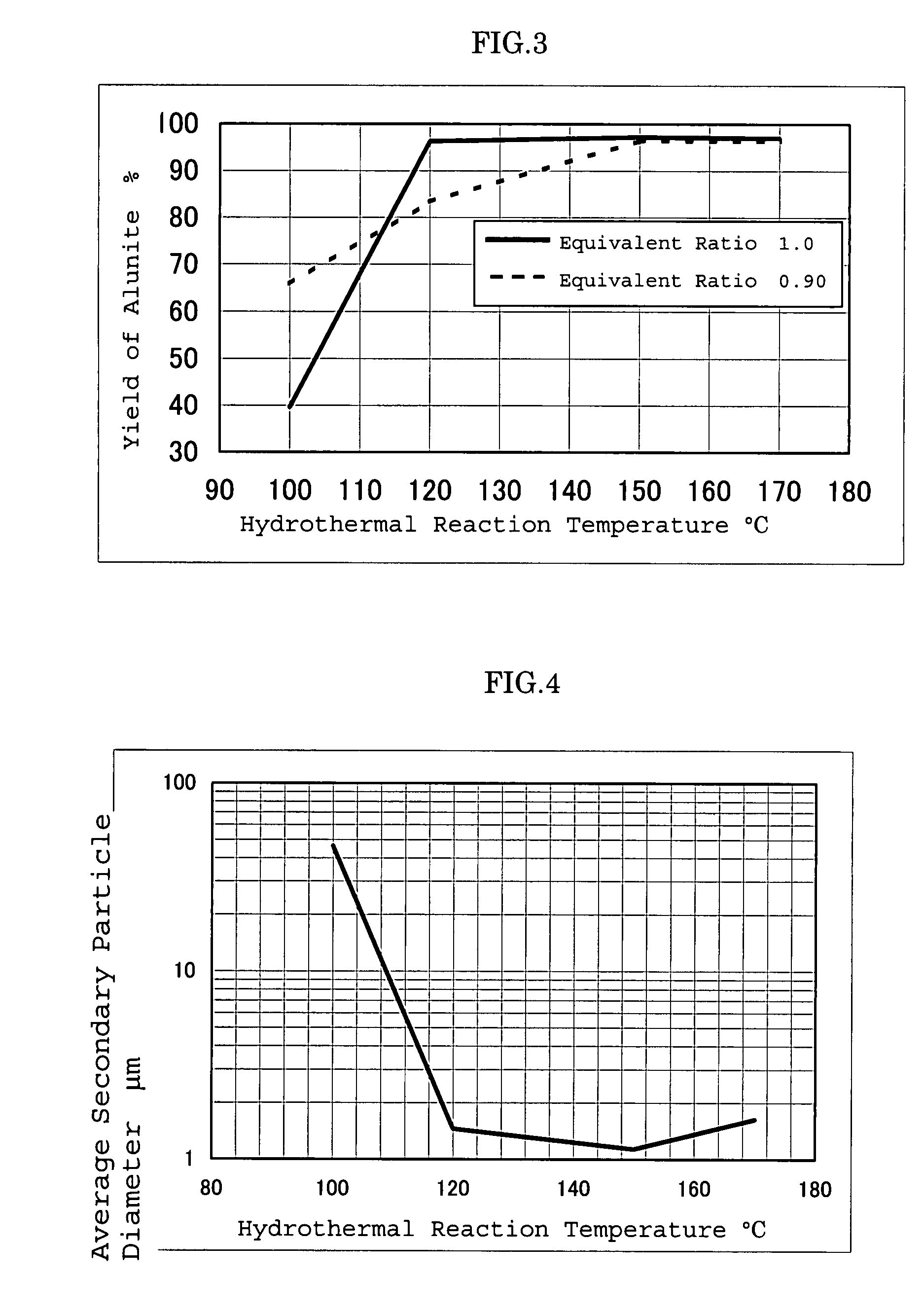Alunite type compound particles, manufacturing process thereof and use thereof
a technology of compound particles and manufacturing processes, applied in the field of alunite type compound particles, can solve the problems of difficult to control the shape of each particle, large variation in particle size, incomplete methods, etc., and achieve the effects of low cost, high reproducibility, and high yield
- Summary
- Abstract
- Description
- Claims
- Application Information
AI Technical Summary
Benefits of technology
Problems solved by technology
Method used
Image
Examples
example 1
Synthesis of Alunite Type Compound Particles
example 1-a
Synthesis of Na0.96Al3(SO4)1.92(OH)6.12.0.63H2O
[0143]127 ml of an aqueous solution of aluminum sulfate having a concentration of 1.025 mol / l and 18.46 g (0.13 mol) of sodium sulfate were added to deionized water to prepare 500 ml of a solution, and 154 ml of 3.382 N sodium hydroxide solution was injected into the above solution under agitation at room temperature over about 1 minute (alkali equivalent ratio: 1.0). After another 20 minutes of agitation, the resulting solution was transferred to an autoclave to carry out a hydrothermal reaction at 170° C. for 2 hours. The reaction solution was cooled to 25° C., filtered, rinsed with 500 ml of water and dried at 105° C. for 22 hours to obtain spherical alunite type compound particles. The characteristic properties of the obtained alunite type compound particles are shown in Table 1. An X-ray diffraction image of the particles is shown in FIG. 5.
example 1-b
Synthesis of Na1.12Al3(SO4)2.17(OH)5.78.0.94H2O
[0144]Alunite type compound particles were synthesized in the same manner as in Example 1-A except that the alkali equivalent ratio was changed to 0.95. The results are shown in Table 1.
PUM
| Property | Measurement | Unit |
|---|---|---|
| average secondary particle diameter | aaaaa | aaaaa |
| average secondary particle diameter | aaaaa | aaaaa |
| particle size distribution | aaaaa | aaaaa |
Abstract
Description
Claims
Application Information
 Login to View More
Login to View More - R&D
- Intellectual Property
- Life Sciences
- Materials
- Tech Scout
- Unparalleled Data Quality
- Higher Quality Content
- 60% Fewer Hallucinations
Browse by: Latest US Patents, China's latest patents, Technical Efficacy Thesaurus, Application Domain, Technology Topic, Popular Technical Reports.
© 2025 PatSnap. All rights reserved.Legal|Privacy policy|Modern Slavery Act Transparency Statement|Sitemap|About US| Contact US: help@patsnap.com



